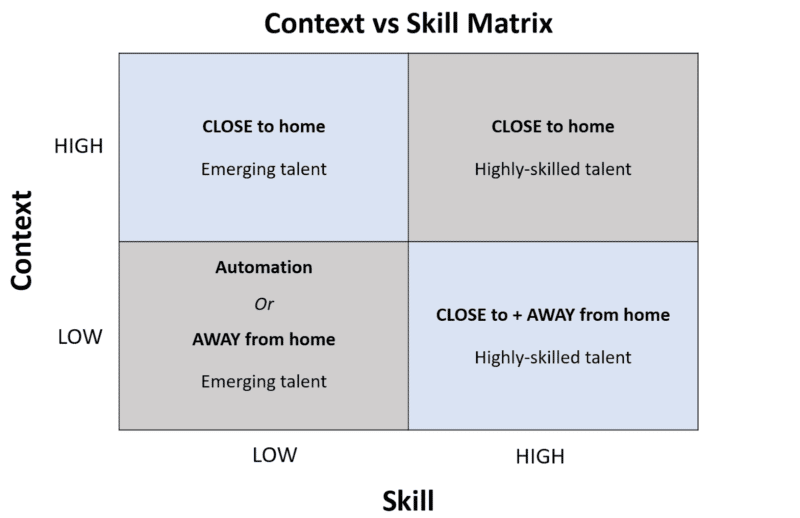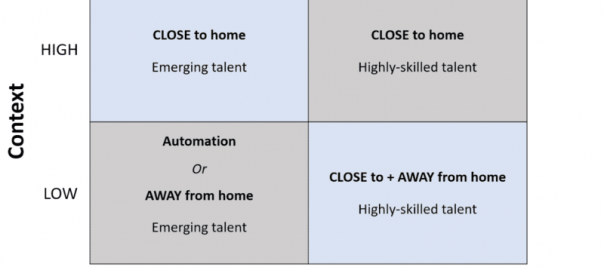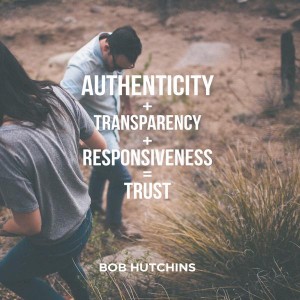Looking to tap new labor markets for marketing talent? You need to know which tasks can be “lifted and shifted.” Here’s a recipe for success.
With the pandemic’s boon to virtual work, the viability of leveraging budget-friendly labor markets becomes more attractive.
While product, IT, and support organizations have successfully done this for years, marketing has been slower to adopt, insisting that its creative essence can’t just be “lifted and shifted.”
But can it?
Context vs. skill
Before transitioning marketing tasks to new labor markets, it’s critical to understand what tasks must stay “close to home” and what can be done “away from home.” Making that determination comes down to context and skill.
Context represents the cultural, social, or business environment that must be deeply understood to do the work successfully.
The higher the need for context, the more likely workers need to be immersed in that environment to be successful. The lower the need for context, the more likely the work can be done elsewhere without compromise.
Contextual understanding is often lived rather than learned and isn’t acquired through training or certifications.
Consider these examples for writing:
- Lower context. A description of a marketing event to be published on a registration page.
- Higher context. A humorous marketing campaign in the U.K. requiring native English-speaking skills, a deep understanding of British culture, and a high degree of “cheek.”
In the high context example, if the campaign’s humorous tagline hinges on the word “nappy” but somehow “diaper” is used, the copy misses the mark. The writer’s immersion in, and familiarity with, British culture is critical as high-context work is subjective, with success having many possible approaches.
In contrast, writing the event description is more straightforward, requiring less context to hit the mark successfully.
Now let’s understand the role of skill.
Skill is the level of expertise needed to perform work. The more difficult the work, the more skilled the worker. The easier the task, the more likely a less skilled worker can pick it up quickly and deliver it effectively.
In contrast to contextual understanding, which is lived, skills can be learned and earned through education, training, certifications, or years of experience.
Consider these examples for websites:
- Lower skill. Copying and pasting copy into a webpage using a basic webpage editor.
- Higher skill. Creating a custom web app requiring a deep understanding of Python.
In the higher skill example, mastering Python requires dedicated time and learning to cultivate the expertise. On the other hand, copying and pasting text into a webpage can be done effectively with minutes of training.
Highly skilled work is harder to shift around, while lower-skilled work is more transferrable.
Read next: What is marketing work management and how do these platforms support agile marketing?
Putting it together
The intersection of context and skill determines the types of marketing tasks that can be successfully shifted across labor markets without impacting the quality of delivery.
The below diagram is illustrative.

1. Low context x low skill
If possible, this should be automated, removing humans from the equation. If automation isn’t feasible, this work is the best candidate to be done away from home in a lower-cost labor market using emerging talent. The low levels of context and skill required mean tasks can be picked up quickly and effectively.
Example. Resizing of digital assets.
2. High context x low skill
This work should be done close to home with emerging talent.
While the skill required is lower, the tasks require a deeper contextual understanding of surroundings to achieve the success that cannot be sourced from anywhere.
Example. Social media monitoring and posting.
3. High context x high skill
This should be done close to home with highly skilled talent.
Since this type of work is the most intricate, it needs the highest degrees of skill and contextual understanding to be done effectively.
Example. Go-to-market strategy creation.
4. Low context x high skill
These tasks are a hybrid of close to home and away from home talent.
It may involve a close to home resource with more contextual understanding working in tandem with away from home resources who help deliver the work.
Example. Website creation and development.
The case against offshoring marketing
A common argument marketers make is that their work is special and must be done closer to home.
While it can be hard to let go, applying the principles above helps distill what is truly special and what tasks can be done from anywhere.
Where to start?
Stay tuned for part two of this article, where I will be breaking down the marketing tasks that are the best candidates to be done away from home, as well as how to save money and speed delivery, all while retaining quality.
The post An incredibly brief guide to shifting marketing offshore appeared first on MarTech.
(35)
Report Post





